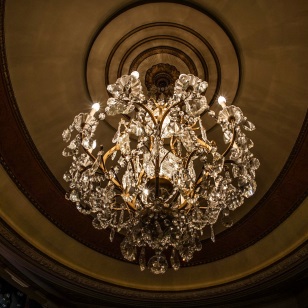Importannt Painting The Lost Seat Of The Duke Of Sutherland: Trentham Hall
Stock No
CACL554
2023
- £5,000.00
- €5,729 Euro
- $6,752 US Dollar
Questions about this item?
Like this item?
Item Description
The Lost Seat of the Duke of Sutherland: Trentham Hall, Staffordshire — Watercolour by Edward J. B. Evans (c.1912)
Subject & Medium
This exceptional watercolour by Edward John Bishop Evans (1860–1923), dated circa 1912, captures not only a landscape but a vanishing world. Depicting Trentham Hall in Staffordshire, viewed serenely across its lake, the work stands as a historic witness painted on the eve of the Hall’s demolition. It offers a rare and poignant memory of the country seat of the Dukes of Sutherland.
Evans employed transparent watercolour washes, finely controlled pen-and-ink detailing, and subtle bodycolour highlights to combine atmosphere with precision. The result is both a masterwork of technique and an irreplaceable historical record.
Composition & Technique
The composition is elegantly structured: the Hall rises beyond the reflective lake, framed by wooded slopes and a softened sky. Evans’s fluid washes establish mood, while his crisp linework delineates the architecture. Highlights of bodycolour add depth, texture, and luminosity—an approach that elevates this painting beyond simple topographical record.
The Story of Trentham Hall
Trentham’s heritage stretches back almost a millennium, first recorded in the Domesday Book (1086) as the site of a priory. Following the Dissolution, the estate passed to the Leveson family, later merging with the Leveson-Gowers, who ascended as the Duke of Sutherland—among the wealthiest and most influential dynasties in Britain.
By the 19th century, the Duke was reputedly the nation’s largest private landowners, with immense holdings in Staffordshire and Scotland. Trentham Hall became their Staffordshire seat, hosting royalty, prime ministers, and leading figures of society.
18th century: Lancelot “Capability” Brown landscaped the grounds, creating sweeping lawns, wooded valleys, and the serpentine lake.
19th century: Sir Charles Barry, architect of the Houses of Parliament, remodelled the Hall into a palatial Italianate residence with formal parterres, terraces, and fountains.
Throughout the Victorian and Edwardian eras, Trentham Hall epitomised aristocratic splendour. Yet by the late 19th century, pollution from the pottery industry and the enormous costs of maintenance brought decline. By 1912, when Evans painted this evocative view, the Hall’s fate was sealed. Demolition began the following year.
Although the house was lost, the celebrated Trentham Gardens survived and today remain one of Britain’s leading heritage attractions. Evans’s painting forms a vital link between the vanished house and the enduring gardens, capturing both memory and continuity.
Conclusion
The Lost Seat of the Duke of Sutherland is more than a work of art—it is a memorial in paint. Evans preserves the grandeur of the Dukes of Sutherland’s lost seat while offering collectors today a rare survival of British country house history.
For discerning buyers of historic British watercolours, heritage art, or rare country house depictions, this represents a once-in-a-lifetime opportunity to acquire a piece that bridges art, history, and memory.
Signature
Signed lower right in watercolour by the artist Edward J. B. Evans.
About the Artist
Edward John Bishop Evans (1860–1923) was both a painter and an esteemed art director in Staffordshire’s ceramic industry, shaping designs for Aynsley, Hammersley & Co, Coalport, and Maw & Co. He also produced landscapes and architectural studies, preserving Staffordshire’s cultural heritage. His works are represented in museum collections and listed on Art UK.
Artistic & Cultural Significance
Artistic mastery: Subtle atmosphere, architectural clarity, and refined technique.
Historic witness: Among the last depictions of Trentham Hall before its demolition.
Cultural symbolism: A visual emblem of Britain’s fading country house era.
Regional pride: By a Staffordshire artist, recording Staffordshire’s greatest lost house.
Frame
Recently reframed in a Larson Juhl gilt moulded scoop-profile design with acid-free gold mount and protected by museum-grade AR70 anti-reflective glass—offering both elegance and conservation.
Framed dimensions: 82 cm wide × 64.5 cm high × 4.5 cm deep.
Provenance
Private estate, Staffordshire collection
Cheshire Antiques Consultant LTD
Exhibited at the Lord Hill Museum
Condition
Painting surface: Good overall, with some foxing and age-related toning in the sky; stable, no creasing.
Mount: Excellent—recently refitted with conservation-quality mount.
Frame: Excellent—recently reframed with AR70 museum-quality protective glass.
Why Acquire This Work
A unique survival of one of Staffordshire’s greatest lost houses.
Both a fine artwork and a historic document.
Signed by Edward J. B. Evans, a significant Staffordshire artist.
Elegantly presented and ready to hang.
A rare opportunity for collectors of British watercolours and heritage art.
Shipping
Worldwide shipping available — professionally packaged and fully insured for secure international delivery.
Available exclusively through Cheshire Antiques Consultant LTD — inquire now to secure this unique piece.
Item Info
Seller Location
Covent Garden, London
Item Dimensions
H: 64.5cm W: 82cm D: 4.5cm
Period
1912
Item Location
United Kingdom
Seller Location
Covent Garden, London
Item Location
United Kingdom
Seller Contact No
+44 (0)7494 763382
More from CHESHIRE ANTIQUES CONSULTANT LTD

















